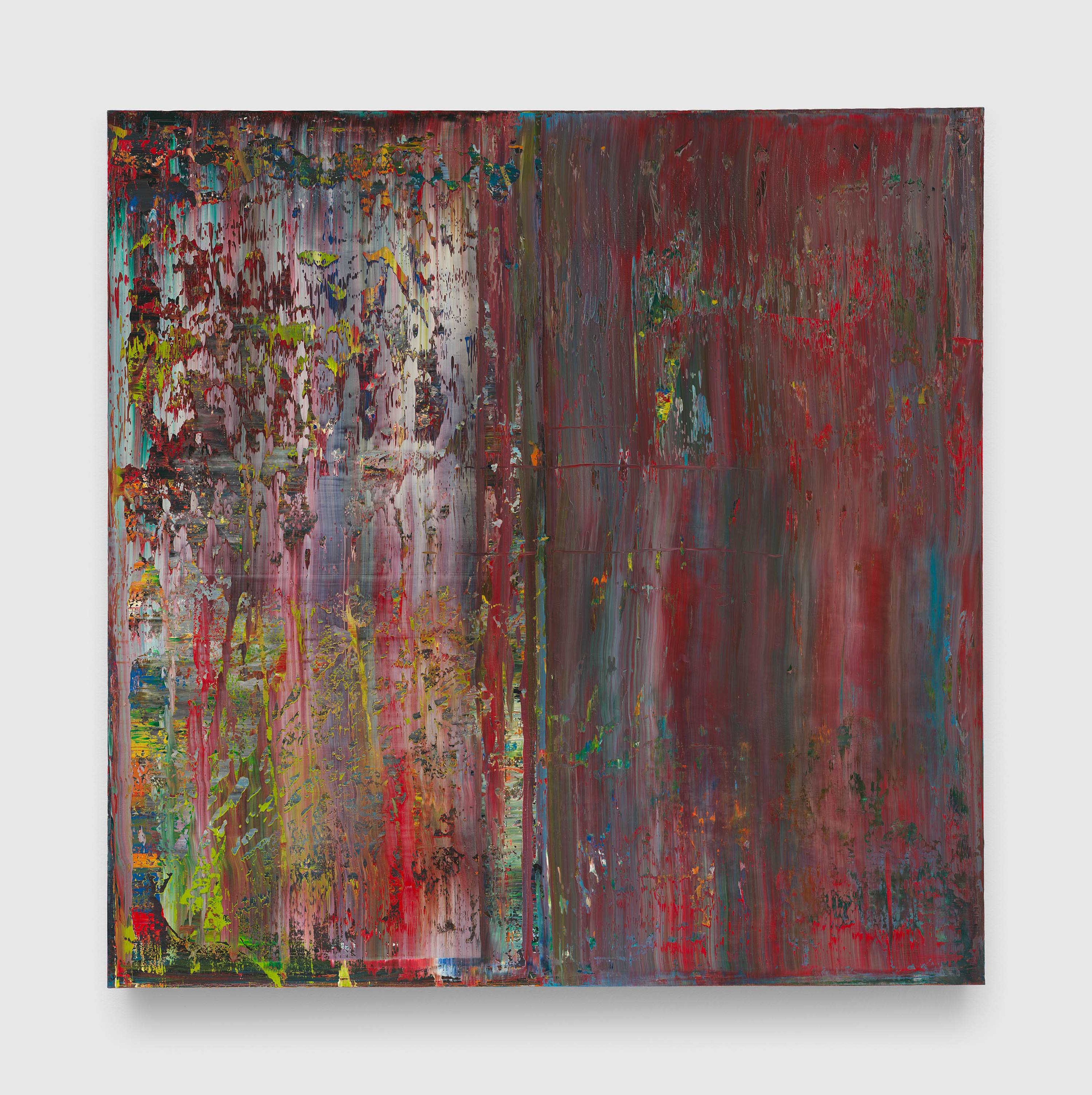Exceptional Works: Gerhard Richter
Abstraktes Bild (Abstract Painting), 1987
Oil on canvas 78 3/4 x 78 3/4 inches 200 x 200 cm
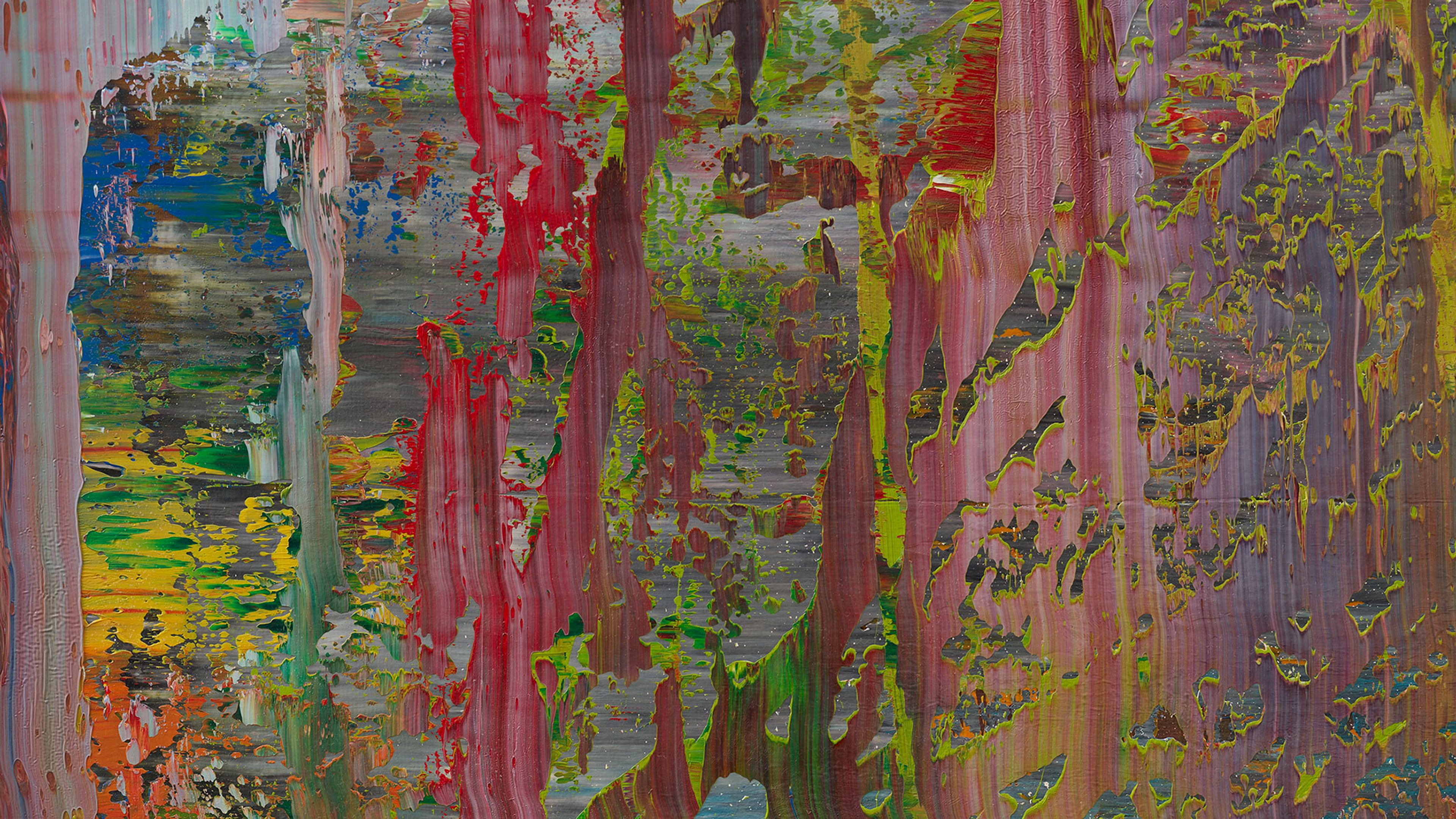
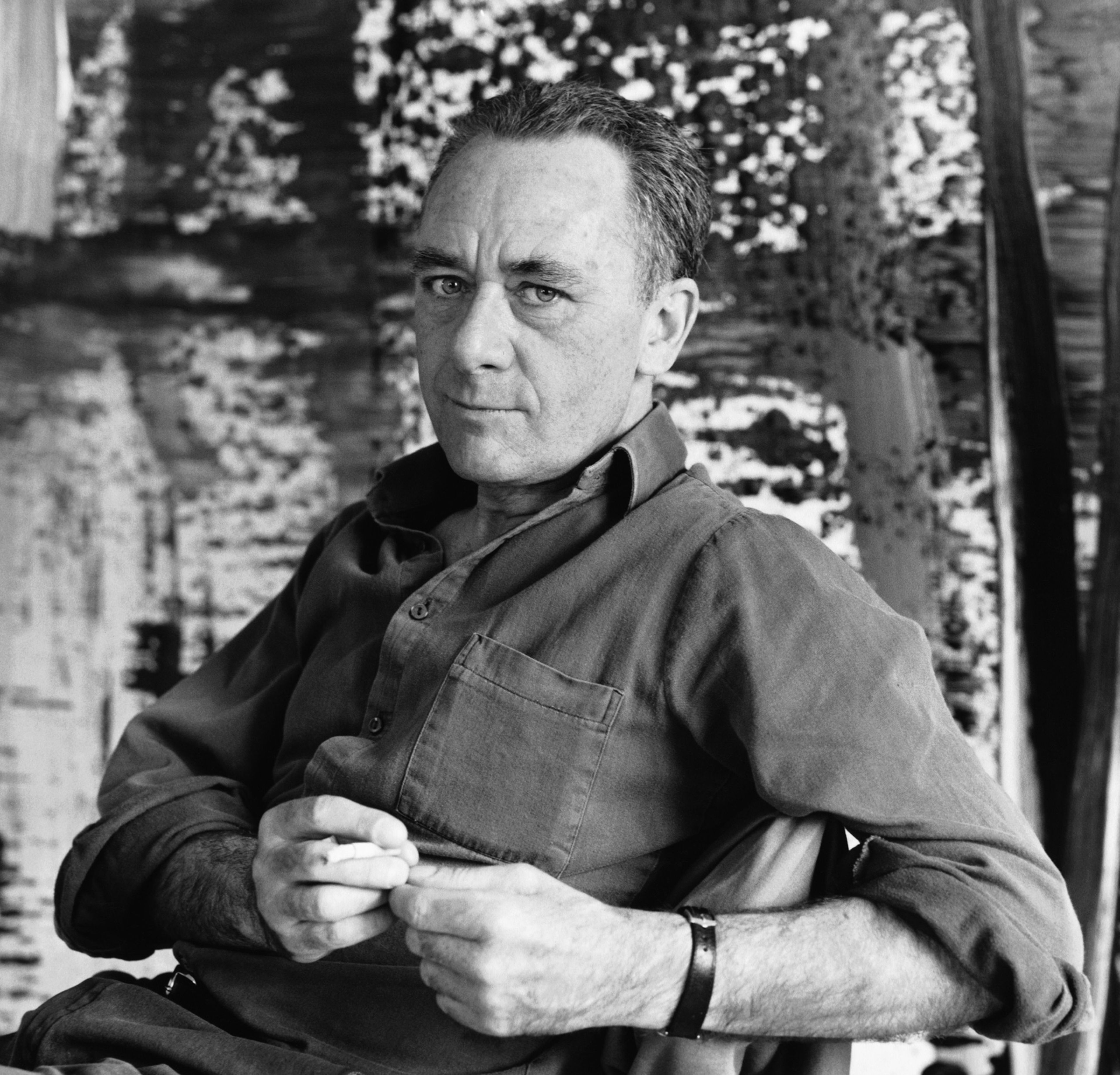
Gerhard Richter, Cologne, Germany, 1989. Photo by Chris Felver/Getty Images
Begun in 1976, Richter’s momentous Abstrakte Bilder (Abstract Paintings) are central to his practice, mediating the primary strains of his oeuvre: painting and photography, and figuration and abstraction. Highly stratified in composition, the works marked a pivotal shift from the artist’s monochromatic and reductivist canvases of the late 1960s and early 1970s, introducing a new mode of composition that is both arbitrary and deliberately planned. In these paintings, Richter introduced a collage technique in which he pieced together painterly layers and shadows from several photographic sources.
By the 1980s, as critic Robert Storr notes, “The technique in Richter’s Abstract Pictures had shifted from rendering alone to the direct application of paint with a brush or hard edge over rendered passages, and from there progressively toward paintings whose visible layers were almost entirely gestural or pigment loaded,” gradually obliterating any illusionistic underpainting on his canvases. Carefully constructed and highly analytical, Richter’s abstract compositions are integral to his investigation of painting.
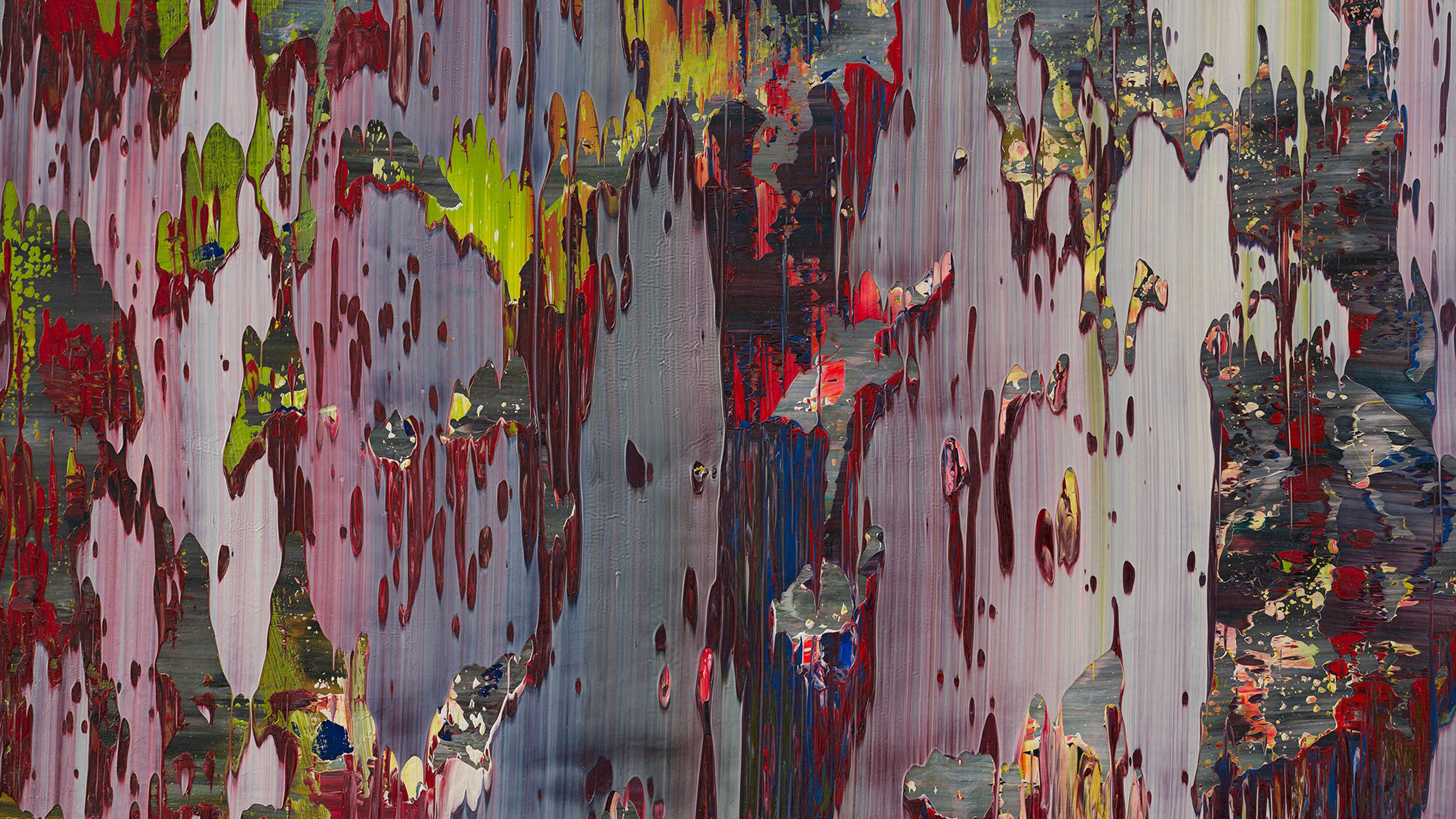
Gerhard Richter, Abstraktes Bild (Abstract Painting), 1987 (detail)
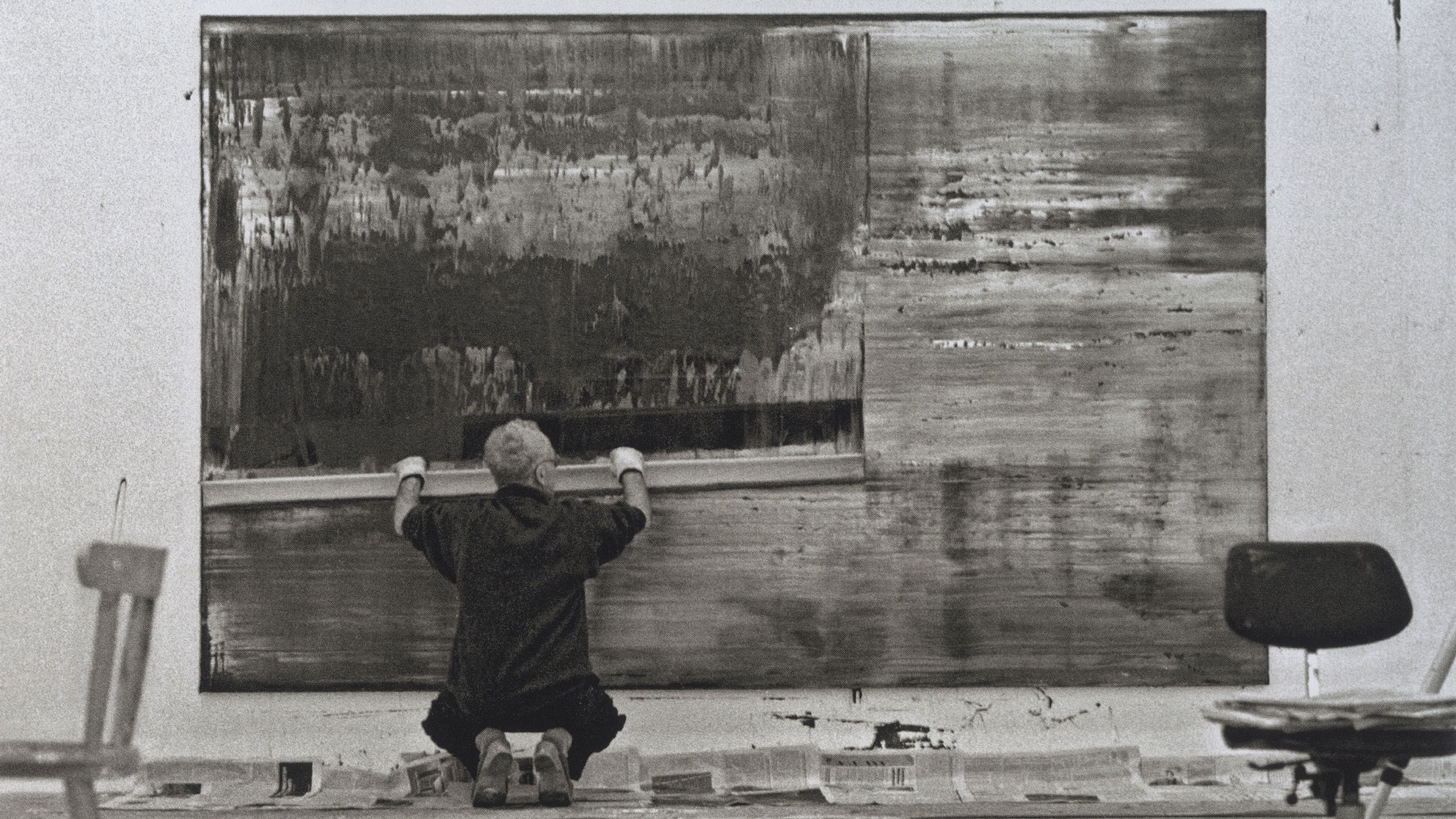
Richter painting with a squeegee tool in his Cologne studio, 1994. Photo by Benjamin Katz
Gerhard Richter, Abstraktes Bild (Abstract Painting), 1987 (detail)
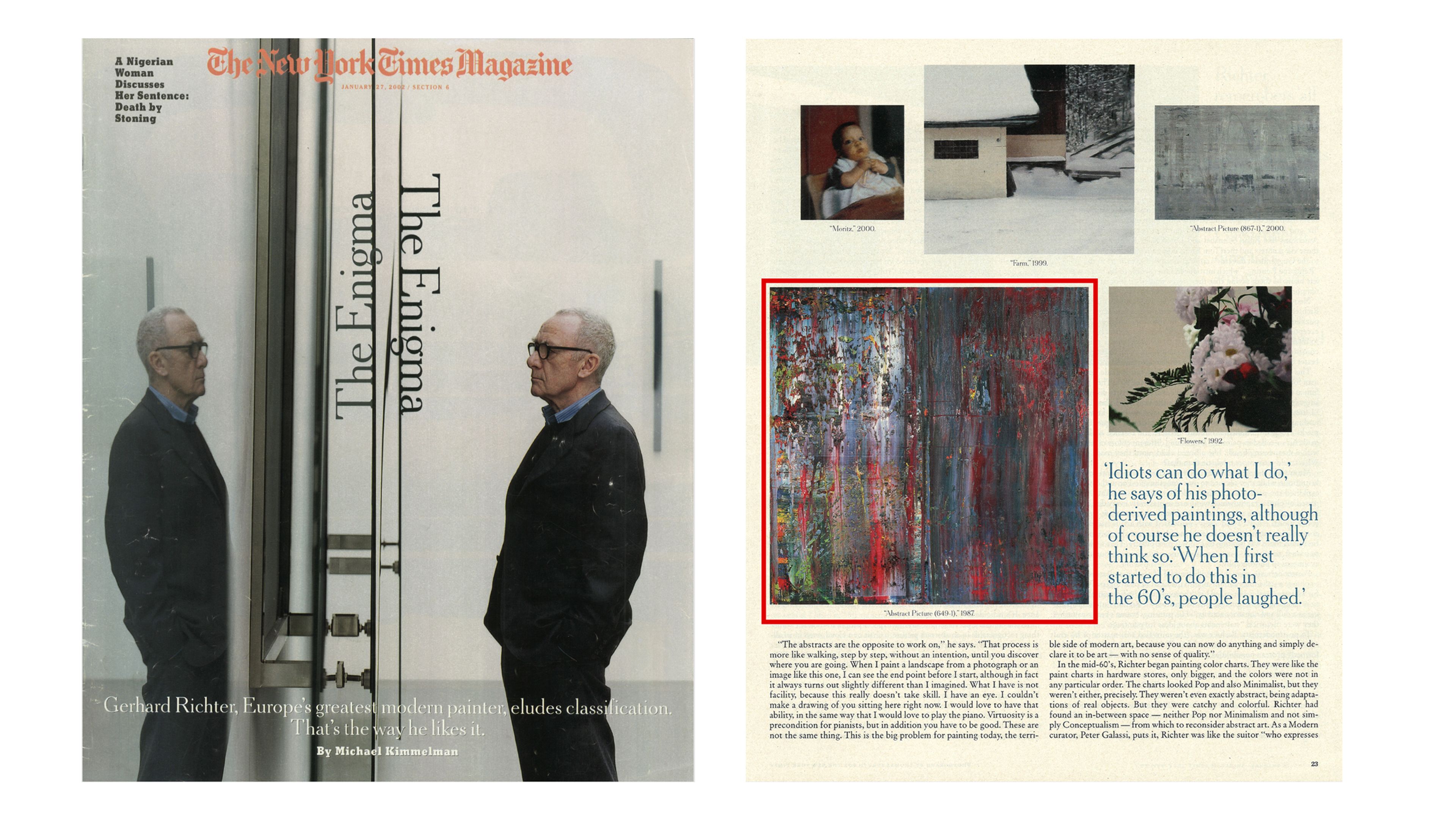
Cover and interior page showing the present work, from “An Artist Beyond Isms,” Richter’s 2002 profile in The New York Times Magazine
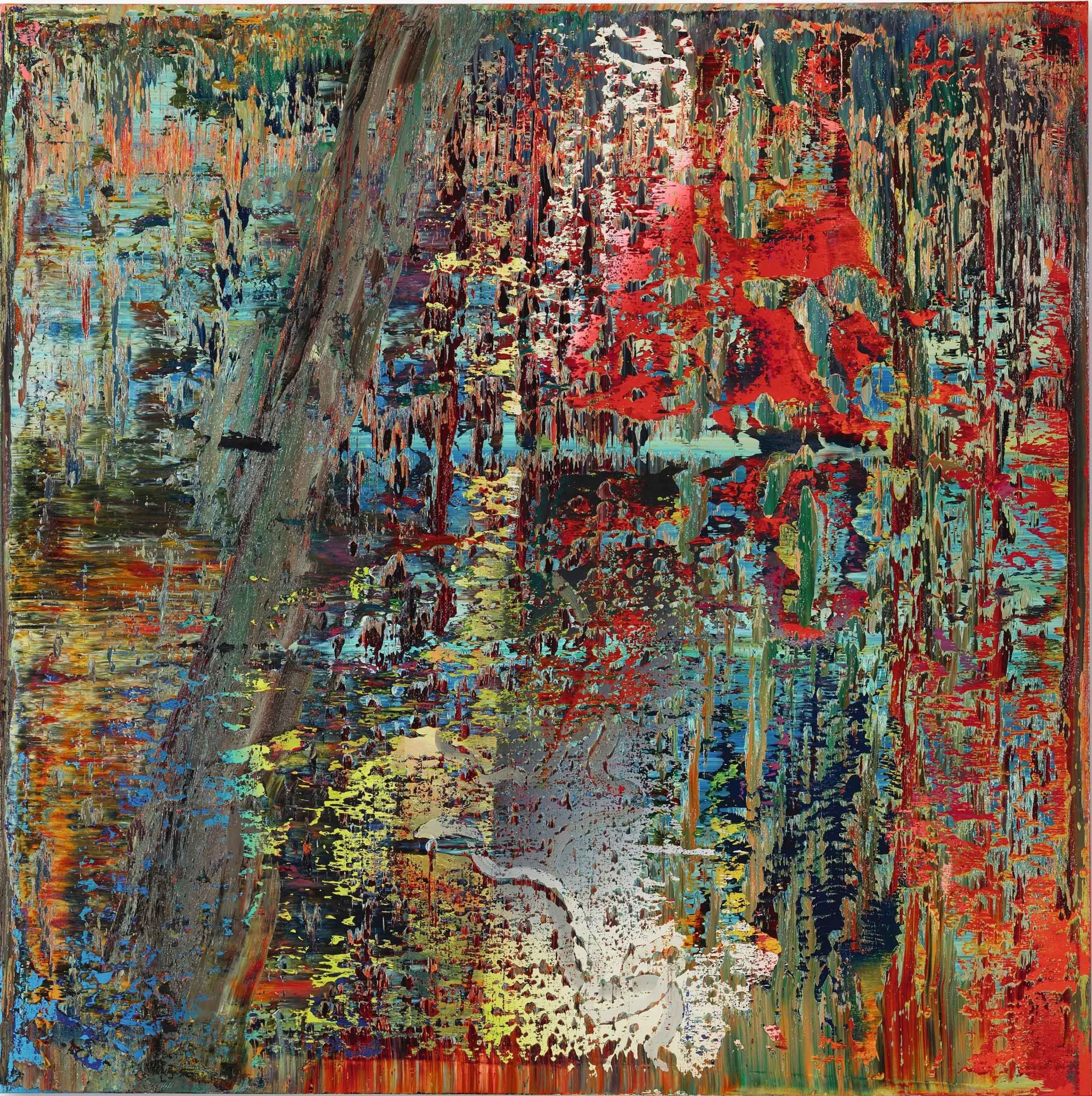
Gerhard Richter, Abstraktes Bild (Abstract Painting), 1987. Collection Pola Museum of Art, Hakone, Japan
“This is one of the finest, most beautiful and strangely moving exhibitions of the work of a living painter in years… His abstractions constantly short-circuit one expectation or another—about elegance, inspiration or technical consistency…. Good abstraction is mysterious, difficult and unpredictable.”
—Michael Kimmelman, critic, in a review of Richter’s 2002 retrospective at the Museum of Modern Art, New York
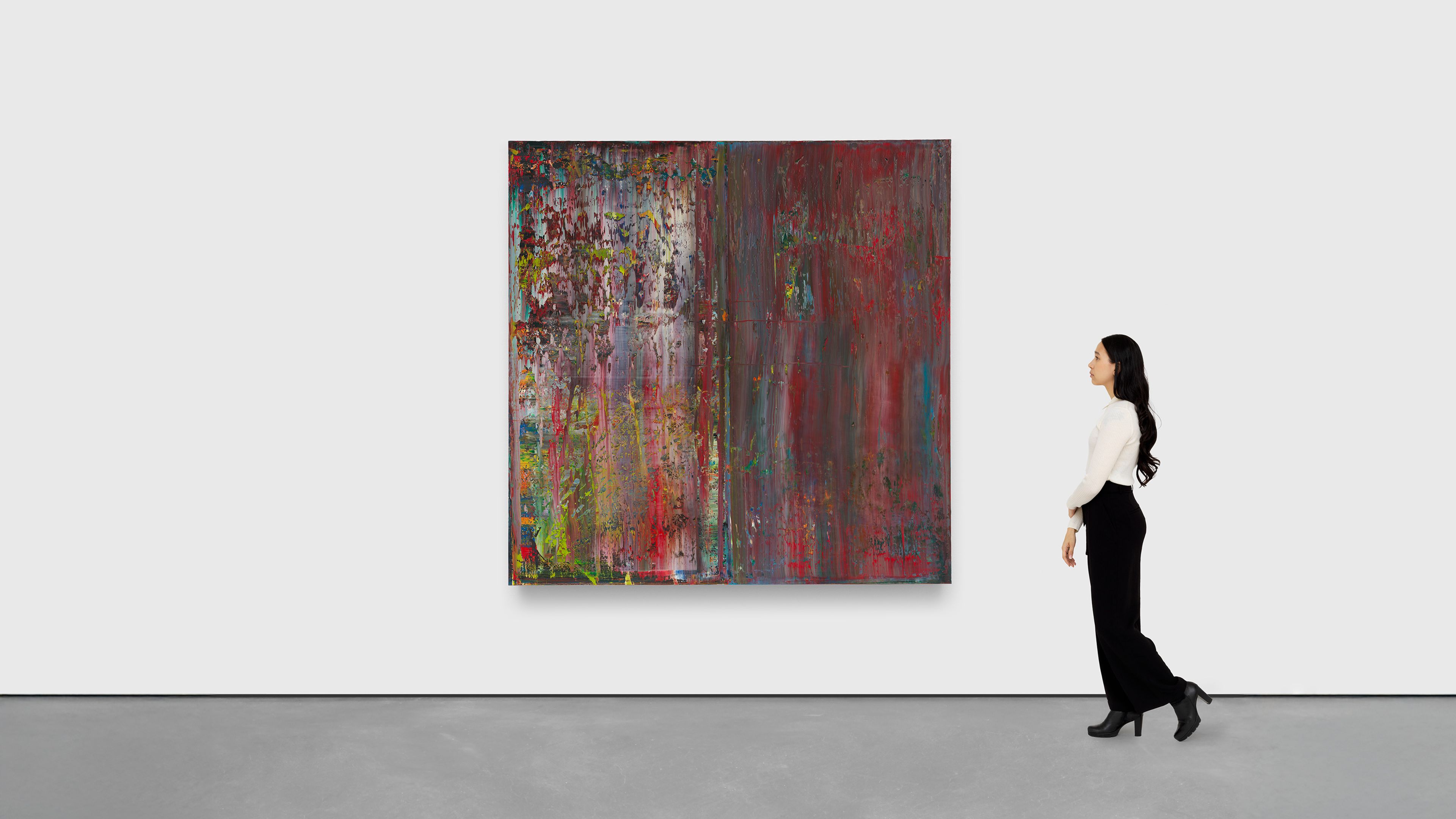

David Zwirner at Art Basel
